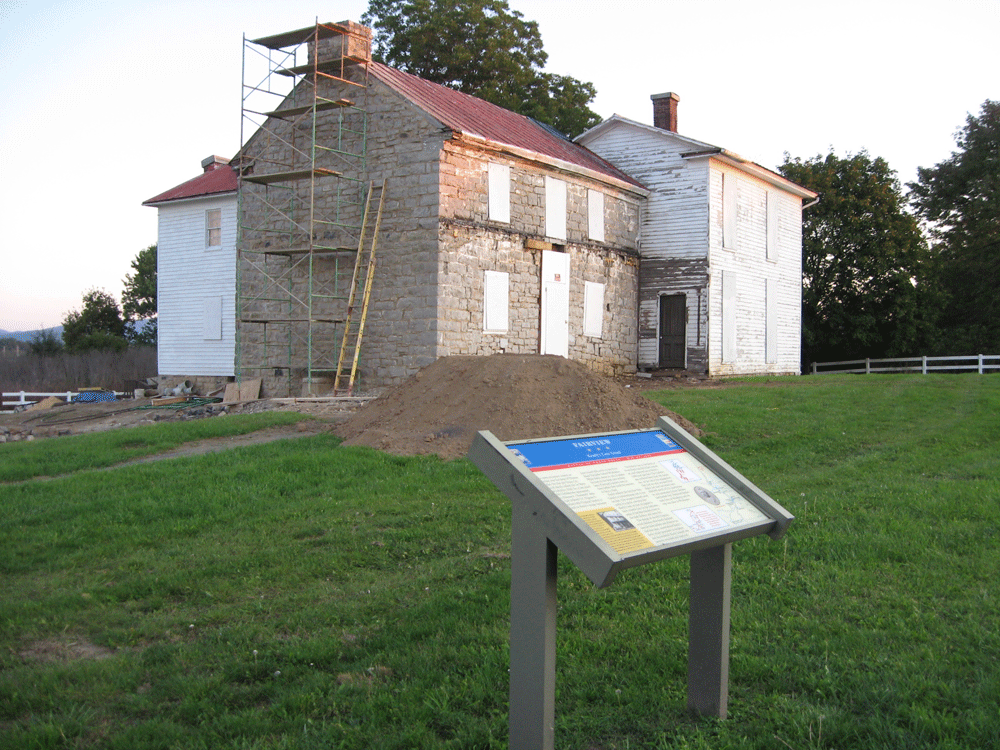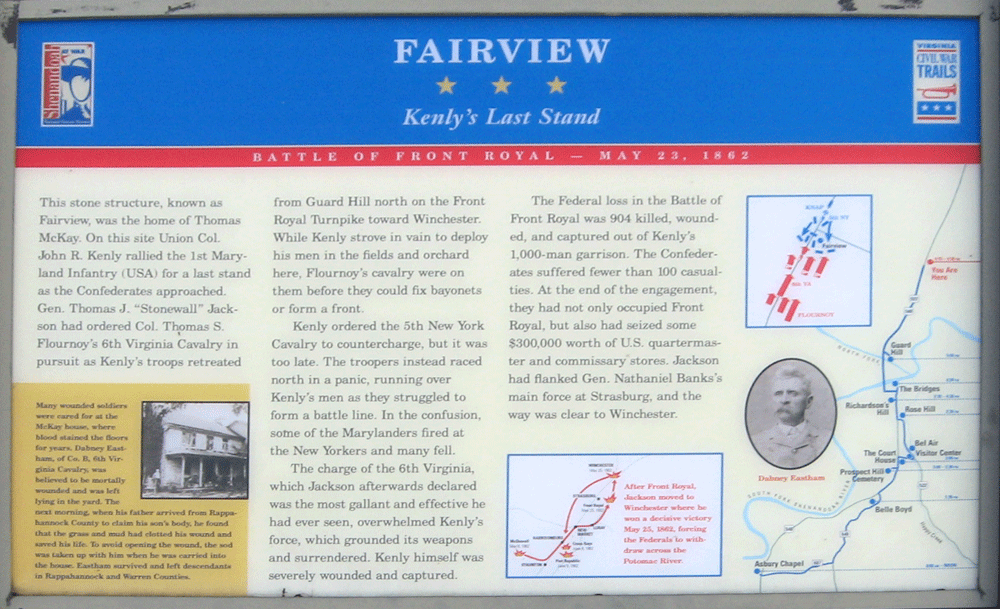Front Royal – Monuments and Markers – 1862 Valley Campaign
The “Fairview – Kenly’s Last Stand” wayside marker is about three miles north of Front Royal along the Winchester highway. (see map below) “Fairview” was the home of Thomas McKay during the Civil War. Here Union Colonel John R. Kenly rallied the 1st Maryland Infantry (USA) for a futile last stand after being forced out of Front Royal by “Stonewall” Jackson’s sudden attack on May 23, 1862. After the battle the house, the stone part of which dates to the war, was used as a hospital.
This is the last stop on the Civil War Trails tour of the Battle of Front Royal. (previous stop – Guard Hil)

Fairview, site of the last stand of Union Colonel John R. Kenly and the 1st Maryland Infantry (USA) at the end of the Battle of Front Royal. It is being renovated.
From the marker:
Fairview
Kenly’s Last Stand
Battle of Front Royal – May 23, 1862
This stone structure, known as Fairview, was the home of Thomas McKay. On this site Union Col. John R. Kenly rallied the 1st Maryland Infantry (USA) for a last stand as the Confederates approached. Gen. Thomas J. “Stonewall” Jackson had ordered Col. Thomas S. Flournoy’s 6th Virginia Cavalry in pursuit as Kenly’s troops retreated from Guard Hill north on the Front Royal Turnpike toward Winchester. While Kenley strove in vain to deploy his men in the fields and orchard here, Flournoy’s cavalry were on them before they could fix bayonets or form a front.
Kenly ordered the 5th New York Cavalry to countercharge, but it was too late. The troopers instead raced north in a panic, running over Kenly’s men as they struggled to form a battle line. In the confusion, some of the Marylanders fired at New Yorkers and many fell.
The charge of the 6th Virginia, which Jackson afterwards declared was the most gallant and effective he had ever seen, overwhelmed Kenly’s force, which grounded its weapons and surrendered. Kenly himself was severely wounded and captured.
The Federal loss in the Battle of Front Royal was 904 killed, wounded, and captured out of Kenly’s 1,000-man garrison. The Confederates suffered fewer than 100 casualties. At the end of the engagement, they had not only occupied Front Royal, but also had seized some $300,000 worth of U.S. quartermaster and commissary stores. Jackson had flanked Gen. Nathaniel Banks’s main force at Strasburg, and the way was clear to Winchester.
From the sidebar:
Many wounded soldiers were cared for at the McKay house, where blood stained the floors for years. Dabney Eastham, of Co. B, 6th Virgina Cavalry, was belived to be mortally wounded and was left lying in the yard. The next morning, when his father arrived from Rappahannock County to claim his son’s body, he found that the grass and mud had clotted his wound and saved his life. To avoid opening the wound, the sod was taken up with him when he was carried into the house. Eastham survived and left descendants in Rappahannock and Warren Counties.

Location of the Fairview – Kenly’s Last Stand wayside marker
The marker is in the yard of Fairview on the east side of the Winchester Highway (US 522) about 2.5 miles north of the Interstate 66 interchange for Front Royal. (38°59’42.9″N 78°10’33.1″W)
